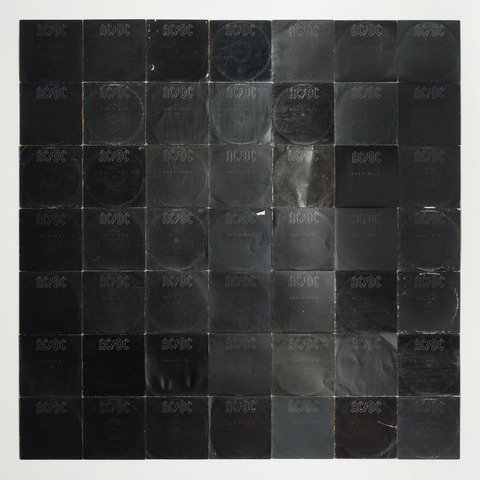Nell
dal 9/5/2015 al 20/6/2015
Segnalato da
9/5/2015
Nell
PS projectspace, Amsterdam
Black 'n White. The artist will present two oppositional grids formed by the repeating covers of two iconic albums by the Beatles and AC/DC.

“... the grid announces, among other things, modern art’s will to silence, its hostility to literature, to nar-
rative, to discourse. As such, the grid has done its job with striking efficiency.” Rosalind Krauss, “Grids”,
October, Vol. 9 (Summer, 1979).
The pleasures of popular music have little in common with modernist art’s well-documented drive for
purity. In her PS Projectspace exhibition BLACK ’n’ WHITE, Sydney-based artist Nell presents opposi-
tional grids formed by the repeating covers of two iconic albums by the Beatles and AC/DC. By calling
these black and white monochrome grids More Sound Hours Than Can Ever Be Repaid she allows for
experience and narrative: the ungentle material lives these artefacts have traversed bear witness to the
pleasures they have repaid their owners’ investments of time. For a wide demographic, simply to look
at these album covers is to hear music, spontaneously and unbidden. It’s a cliché but pop music – and
even AC/DC is popular music – is the soundtrack to our lives. It is music which drowns out modernism’s
will to silence; feeding back into the grid it’s noise to modernist art’s pure signal.
Commonly called the White Album, it’s actually no such thing. The Fab Four’s ninth studio album is, in
fact, eponymous. It’s art world equivalent would be a minimalist painting conspicuously named Untitled.
Created by esteemed British pop artist Richard Hamilton, the cover for The Beatles (1968) featured
unique serial numbers, an astute comment on the aura of the (musical) work of art in the age of me-
chanical reproduction. “En masse they look devastatingly ‘painterly’ and they reference so many of the
tropes in modernist painting: the grid, the monochrome, the readymade, editions, appropriation, etcet-
era,” Nell has said.
But these “monochromes” are dirty. Even AC/DC’s Back in Black (1981) doesn’t stay that way. Greasy
or smudgy fingerprints, vinyl ring wear, spilt drinks: life gets in. It’s like bacteria that boost our health.
Nell’s own biographical narrative surfaces in the fact that one of the white Beatles records was her fa-
ther’s copy, which she “thrashed”, as the vernacular has it, as a teenager. Many will recognise the grids’
shared title as a tribute to the late US artist Mike Kelley. Again it’s autobiographical: Kelley was a huge
inspiration to Nell as a young artist, among so many others of her generation, and she was working on
these grids when news came of his suicide. “I was very affected by his death and so that’s why the title
is so direct,” she says. Kelley, of course, was exemplary in making art that showed how life leaves its
grubby marks on us.
The Beatles was recorded as the group was falling apart; Back in Black was made as AC/DC was trying
to hold it together following the death of singer Bon Scott. Nell is attracted to diametrical oppositions (life/
death, noise/silence) but, in keeping with her Buddhist practice, always seeks a middle path, a third way.
The third work in this exhibition, A Short History of Rock ‘n’ Roll – My Grey Album, takes a copy each of
Back in Black and The Beatles and, in two gestural storms of enamel paint, covers them in their opposite
tones. Obviously, the artist could have uniformly reversed the colours, using stricter post-painterly fields
of black and white. But she is happy to leave the mess because she knows that, outside the grid, rock
’n’ roll really is noise pollution. And who would have it any other way?
Image: PS Nell BLACK 'n WHITE
Opening: Sun May 10 4pm
PS
Madurastraat 72
Amsterdam
Sat - Sun 2pm to 5pm



